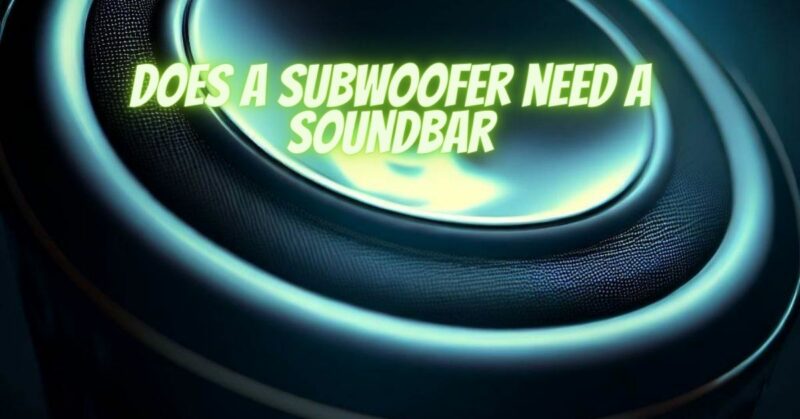Subwoofers are renowned for their ability to reproduce low-frequency sounds and deliver the deep bass that adds impact and excitement to our audio experiences. Soundbars, on the other hand, have become increasingly popular as a space-saving solution for enhancing TV sound quality. But when it comes to subwoofers, do they necessarily need to be paired with a soundbar? In this article, we’ll delve into the relationship between subwoofers and soundbars to help you understand their roles and whether a subwoofer needs a soundbar.
The Purpose of a Subwoofer:
A subwoofer is a specialized speaker designed to reproduce low-frequency audio signals, particularly the deep bass frequencies that add richness and power to music, movies, and other audio content. Its primary function is to deliver the low-end impact and rumble that regular speakers often struggle to produce accurately. Subwoofers excel at reproducing frequencies below the range of typical speakers, resulting in a more immersive and dynamic audio experience.
The Role of a Soundbar:
A soundbar is a compact audio device that combines multiple speakers in a single enclosure, often positioned below or in front of a television. It is designed to enhance TV audio by delivering clearer dialogue, wider sound dispersion, and improved overall sound quality compared to built-in TV speakers. Soundbars are particularly effective at simulating surround sound and creating a more immersive audio environment.
Subwoofer and Soundbar Compatibility:
While subwoofers and soundbars can be used together to create a comprehensive audio setup, they are not inherently dependent on each other. Here are some points to consider:
- Soundbar with Built-in Subwoofer: Many soundbars come with built-in subwoofers or dedicated bass drivers, eliminating the need for a separate subwoofer. These integrated designs can deliver sufficient bass performance for most casual listeners and smaller spaces, making an external subwoofer unnecessary.
- External Subwoofer with Soundbar: If you desire more impactful and extended bass response, or if you have a larger room, adding an external subwoofer to a soundbar setup can enhance the low-end performance significantly. The subwoofer can handle the deep bass frequencies, while the soundbar focuses on midrange and high-frequency content, resulting in a more balanced and immersive audio experience.
- Standalone Subwoofer: Subwoofers are not limited to soundbar setups. They can be used independently with various audio systems, such as stereo systems, home theater receivers, or dedicated music setups. If you prioritize deep bass and want to enjoy a powerful low-frequency impact across different audio sources, a standalone subwoofer can be a valuable addition.
Conclusion:
While a subwoofer can complement a soundbar by delivering deeper bass and enhancing the overall audio experience, it is not a mandatory component for every soundbar setup. Some soundbars come with built-in subwoofers or dedicated bass drivers that provide satisfactory bass performance on their own. However, if you crave more impactful bass response and a truly immersive audio experience, adding an external subwoofer to your soundbar setup can take your sound quality to the next level.
Ultimately, the decision to incorporate a subwoofer into your soundbar setup depends on your specific audio preferences, room size, and desired level of bass performance. Whether you choose to use a soundbar with built-in bass drivers, add an external subwoofer, or opt for a standalone subwoofer in a different audio setup, the goal is to create a satisfying and engaging listening experience tailored to your preferences.


